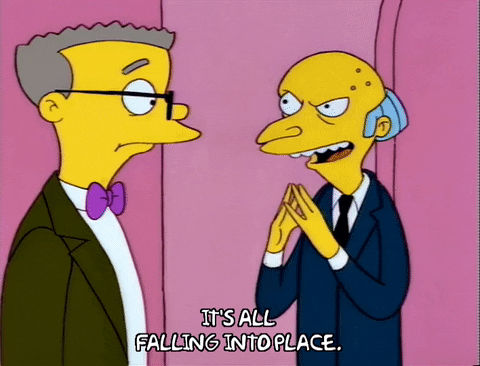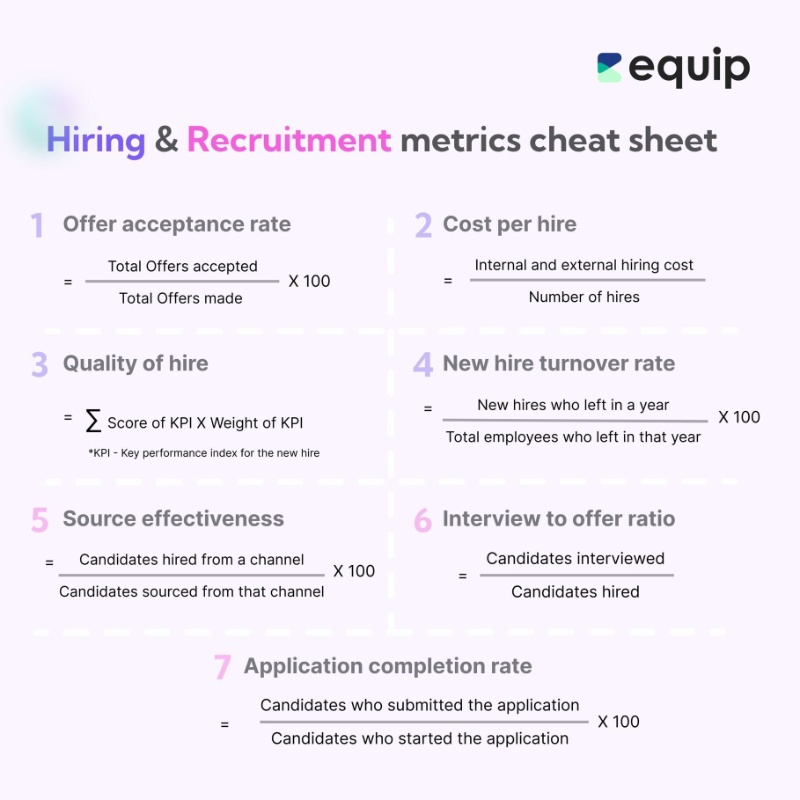
Defining Hiring, Recruitment, and Talent Acquisition
Are hiring and recruitment two sides of the same coin? What about talent acquisition? Staffing? Headhunting? While these terms are often used interchangeably, they are different. Read on to find out how they are defined, what makes them different, and tips to ace them with a data-driven approach.
What is Hiring?
Hiring is extending an offer to a candidate to fill in a vacancy for a position. It is the final step of the recruitment process. In other words, hiring is a subset of recruitment.
What is Recruitment?
Recruitment is the entire process of sourcing, shortlisting, interviewing and hiring candidates. While looking out for immediate requisition needs, it is also a long-term play to engage passive candidates and build a pipeline for future requirements.
What is Talent Acquisition?
Talent acquisition is long-term human resources planning and finding appropriate candidates for positions that require a very specific skill set. It is applicable for hiring for leadership positions and specialists for a company.

How are hiring, recruitment, and talent acquisition different?
Inspecting the areas of focus and key metrics to track while hiring, recruiting and acquiring talent is the easiest way to differentiate between them.
Hiring Metrics
1. Time to fill
Time to fill is the number of business days taken to fill an open position. Companies have their own criteria to define a job opening—a hiring manager’s approval for a job opening, approval from HR teams or posting the job on the job board to attract candidates. A shorter time to fill is an indicator of the high quality of the candidates sourced and the efficiency of screening, interviewing and making an offer. (Or it could be sheer luck sometimes when your hiring stars align!) Using tools such as an ATS and assessment platform can help to shorten the time to fill. Need a benchmark? It varies based on your industry and location. SHRM reports an average of 47.5 days as the average time to fill.
2. Offer acceptance rate
It is the rate at which candidates accept the offers you make. Calculate offer acceptance rate using this formula.
Offer acceptance rate = (Total Offers accepted/Total Offers made) x 100
It is evident that when more candidates accept your offers, the offer acceptance will be higher and thus better for your hiring process. Screening the right candidates, making competitive offers and aligning expectations are key to increasing offer acceptance rate. Long term recruitment strategies such as employer branding also determine candidates’ perception of your brand and influence the offer acceptance rate.
3. Cost per hire
Cost per hire = (Internal & external hiring costs/Number of hires) x 100
While cost per hire sounds self-explanatory, the caveat lies in carefully factoring in the internal and external recruitment costs. The number of hires and cost is measured over the same period (e.g. monthly, quarterly, annually). Cost per hire is usually coupled with other hiring metrics such as quality of hire and candidate experience to draw insights and strategize budget allocation. By itself, cost per hire cannot be classified as too high or low for any business.
4. Quality of hire
Unlike other metrics, quality of hire can be a bit ambiguous and subjective. It represents the value addition to the company by the new hires. Quality of hire is a function of performance appraisals, turnover rates, and hiring manager satisfaction. Organizations have their own frameworks to define the quality of hire (QoH). A simplified formula for it is:
Quality of Hire = ∑(Score of KPI) x (Weight of KPI)
where KPI is the Key Performance Indicator for the new hire and weights are assigned to each KPI based on importance.
5. New hire turnover rate
Annual new hire turnover rate = (New hires who left in a year/Total employees who leave in the same year) x 100
Can you retain your new hires for a year? A low turnover rate directly depends on high retention rate for new hires. New employees’ happiness or satisfaction is correlated with a smooth onboarding experience, aligning expectations for the role, setting them up for success with training and a healthy relationship with their coworkers.
Recruitment metrics
1. Candidate Source Effectiveness
You can use multiple channels to source your candidates such as job portals, referrals, social media, and campus hiring. But which channel works best in your favor? Use Candidate Source Effectiveness as follows:
Candidate Source Effectiveness = (Candidates hired from a channel/ Total candidates sourced from the channel) x 100
When you hire from channels with the highest candidate source effectiveness, you optimize your cost per hire too! Comparing candidates source effectiveness and Quality of Hire will give you interesting insights into if candidates who add more value to your business are sourced from the most effective channel.

2. Application Completion Rate
Application Completion Rate = (Candidates who submitted the application/ Candidates who started the application) x 100
How many sections in an application form are too many? Of course you want it all—contact details, employment history, references, and their pet’s favorite food (okay, maybe not the last one). Well planned application forms should allow candidates to auto-fill or import most of the information. The gist is do not leave your candidates with this feeling while submitting their application to achieve higher application completion rates.

3. Time to Interview
It is the time taken to schedule interviews with candidates after a job is posted. (Not to be confused with the best time of the day to schedule an interview!)
Imagine if there was a tool that creates questions for you, grades candidates’ performance and automatically shortlists the top candidates for interviews. That’s exactly what Equip does for you. Once you source your candidates, sit back while Equip shortlists the most skilled candidates for interviews. Our recruiters have reported reducing 50% of their hiring stages after using Equip to assess candidates.
4. Interview to offer ratio
Interview to Offer Ratio = Candidates interviewed /Candidates who receive offers
A lower interview to offer ratio means a more precise and effective interview process. To maintain a consistently low ratio, sharpen your pre-screening process and refine your interviewing techniques.
5. Candidate experience
It is typically gauged through candidate surveys, as there’s no standard formula to calculate it.
Happy candidates appreciate clear and timely communication, detailed offer information and a positive experience, despite the outcome of the process.
For innovative candidate experience ideas, check out Roblox’s 3D Career Centre.
Talent acquisition metrics
1. Strategic Alignment
This metric assesses how well the talent acquisition strategy aligns with the overall business goals and objectives. Strategic alignment involves ensuring that the skills, experiences, and potential of new hires are in line with what the organization needs to achieve its long-term goals. It's not just about filling positions; it's about filling them with individuals who will drive the company forward. Measuring this involves evaluating the effectiveness of recruitment processes in sourcing candidates who not only meet the job requirements but also possess the potential to contribute to strategic business objectives.
2. Employee Engagement and Performance
This metric evaluates how engaged employees are in their work and how this engagement translates into performance. Engaged employees are typically more productive, show greater loyalty, and are more likely to contribute positively to the organizational culture. Measuring engagement and performance can involve regular surveys, performance reviews, and productivity metrics. This metric is crucial as it directly impacts the overall success of the organization and can also inform future talent acquisition by highlighting the traits and skills of high-performing and engaged employees.
3. Retention Rate of Key Talent
The retention rate of key talent measures how well the organization is doing at keeping its most valuable employees. High turnover, especially of top performers or critical skill holders, can be costly and disruptive. This metric is calculated by looking at the proportion of key talent that remains with the company over a specific period. It's important because it provides insight into the effectiveness of not only the recruitment process but also subsequent engagement, development, and retention strategies.
4. Succession Planning Effectiveness
This metric gauges how well an organization is preparing for future changes in leadership and critical roles. Effective succession planning ensures that there are qualified and well-prepared employees ready to step up when key positions become vacant, whether due to retirement, resignation, or promotion. Measuring the effectiveness of succession planning can involve assessing the readiness of identified successors to take on new roles and the smoothness of transition when leadership changes occur.
5. Talent Pool Strength
This metric looks at the depth and quality of the talent pool available to an organization. A strong talent pool means the company has a ready supply of qualified candidates who can fill key roles as they become available. This is especially important in rapidly changing industries or in organizations facing a lot of turnover. The strength of a talent pool can be assessed by the number of qualified candidates in the recruitment pipeline, the diversity of skills and experiences available, and the potential of these candidates to grow within the organization.
Hiring and Recruitment Metrics & Formulae: A Cheat Sheet

Summing up differences between Hiring, Recruitment and Talent Acquisition
All three processes differ in their approach but ultimately lead to creating the best workforce within an optimal time, budget and resources. Despite the nuances, interconnected parts of the broader talent management strategy of a company. Now you can brag about your newfound knowledge of these terms in your HRM circles!
Frequently Asked Questions
What is headhunting?
Headhunting is a specialized recruitment process that involves actively seeking out and recruiting highly qualified and often high-profile candidates for specific positions, typically for senior-level or highly specialized roles. Unlike traditional recruitment, which often relies on attracting candidates who are actively seeking new opportunities, headhunting is more proactive and targeted.
What is staffing?
Staffing refers to the process of finding, evaluating, and placing workers in positions within companies. Unlike headhunting, which is typically focused on filling high-level or specialized roles, staffing is more general and encompasses a wide range of job levels and types. It can apply to temporary, contract, part-time, or full-time positions and is a critical function in human resources and talent management.

